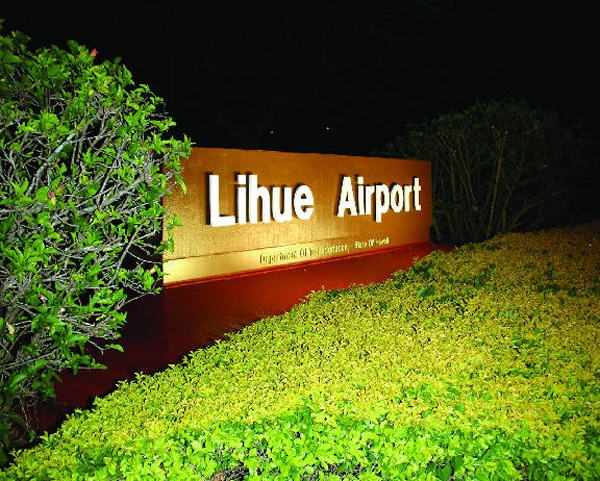LIHUE — One of two runways at the Lihue Airport lacks a 1,000-foot Runway Safety Area, or overrun zone, as required by the Federal Aviation Administration. The problem is that Runway 3-21, which runs parallel to the terminal building, ends
LIHUE — One of two runways at the Lihue Airport lacks a 1,000-foot Runway Safety Area, or overrun zone, as required by the Federal Aviation Administration.
The problem is that Runway 3-21, which runs parallel to the terminal building, ends just a few hundred feet from the Pacific Ocean, leaving no room on that end to create the necessary buffer.
“We’re going to have to go ahead and extend the runway on the opposite side to make sure we have the clearance,” said Ford Fuchigami, deputy director of the state Department of Transportation.
On Monday, Gov. Neil Abercrombie announced the release of nearly $100 million for construction or capital improvement projects at airports across the state. The Lihue Airport received $410,000 to plan for an environmental assessment related to the reconfiguration.
The FAA defines a Runway Safety Area as “a defined surface surrounding the runway prepared or suitable for reducing the risk of damage to airplanes in the event of an undershoot, overshoot, or excursion from the runway.”
“DOT intends to eventually extend the southwest end of Runway 3-21 (parallel to terminal) by 855 feet, while still providing a standard 1,000-foot runway safety area for the northeast end of the runway,” Justin Fujioka, press secretary for Abercrombie, wrote in an email.
In other words, the plan is to shift the runway southwest, toward the Kauai Lagoons Golf Club, to provide for the necessary clearance.
The estimated completion date for the planning phase of the project is November 2016, according to Fujioka.
In 2005, Congress mandated that all commercial airports enhance passenger safety by improving their Runway Safety Areas by 2015 and that that FAA report annually on its progress, according to a 2009 DOT report.
The Associated Press reported in 2006 that more than half of U.S. commercial airports — including some of the busiest in the country, like Los Angeles International Airport and O’Hare International Airport in Chicago — did not have the 1,000-foot safety area at the end of a runway.
• Chris D’Angelo, environmental reporter, can be reached at 245-0441 or cdangelo@thegardenisland.com.


